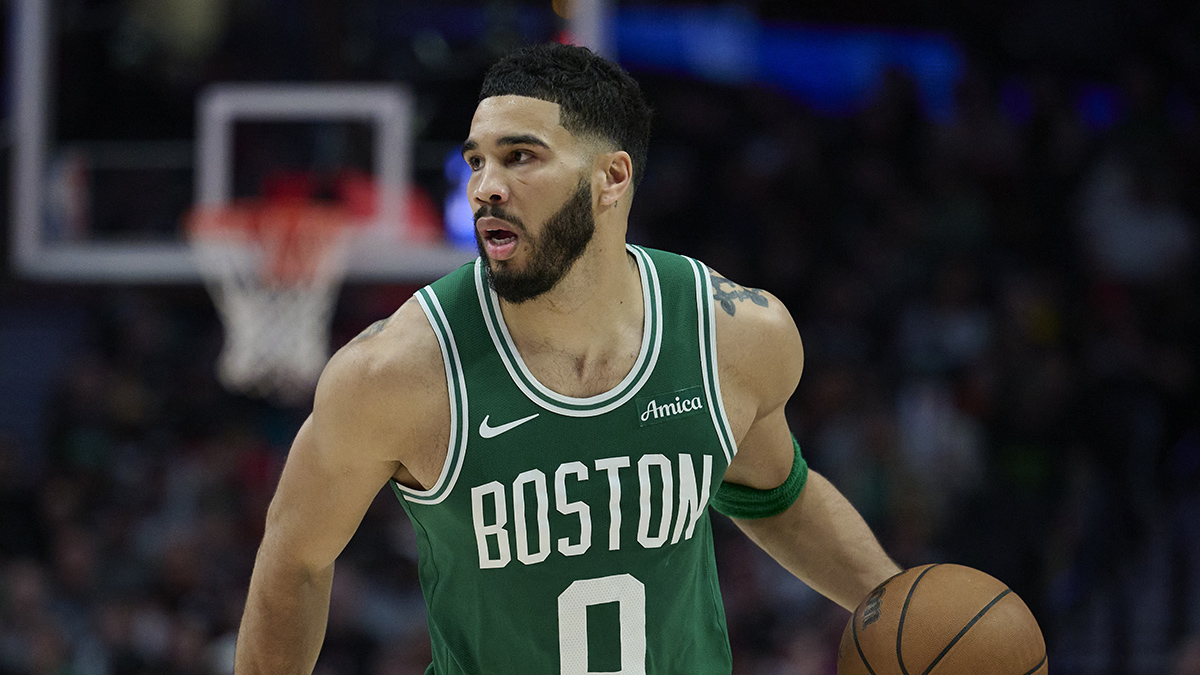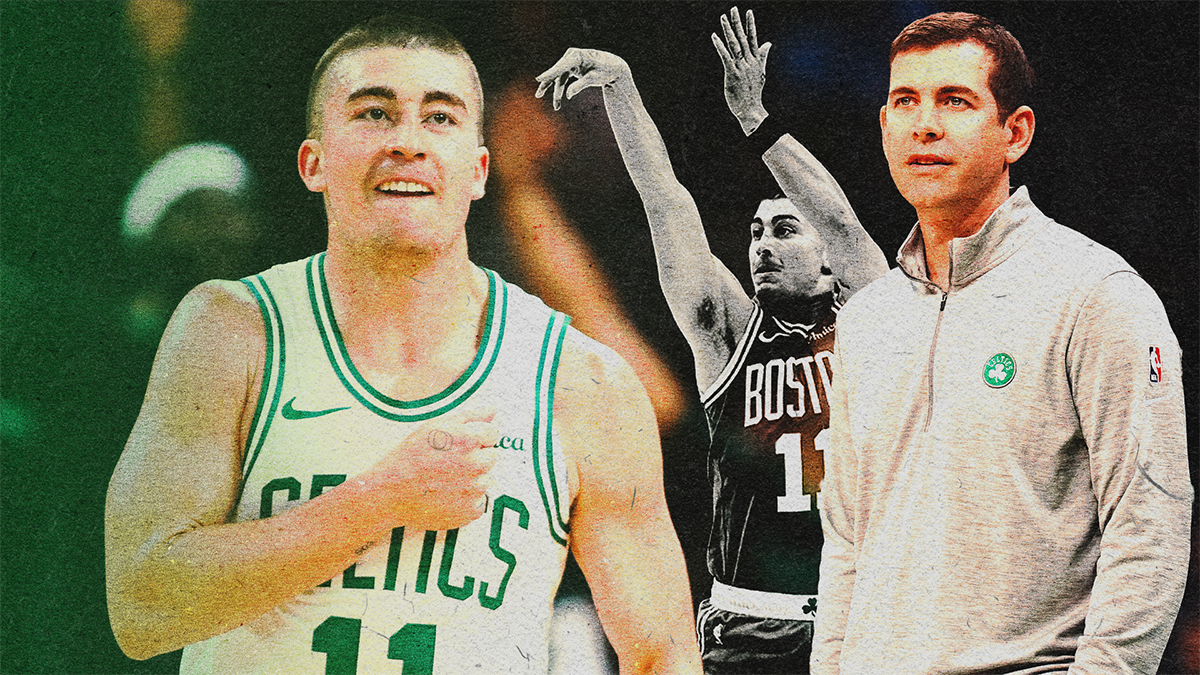In his former role as head coach of the Boston Celtics, Brad Stevens loved to needle reporters about our obsession with the starting five.
Stevens routinely experimented with the best mix of players and liked to remind us that who finishes a game is far more important than who starts.
He’s not wrong. But the Celtics’ inability to set a tone last season -- whether starters or early subs -- was undeniably an issue. Boston ranked 20th in first-quarter offensive rating last year at 109.7 points per 100 possessions. What's more, in the 34 games that the Celtics had a first-quarter offensive rating of less than 113 -- or right about their offensive rating for the season -- the green were a gruesome 9-25 (.265 winning percentage).
Stay in the game with the latest updates on your beloved Boston sports teams! Sign up here for our All Access Daily newsletter.
The point here is that how a team starts a game matters. Chemistry within that first five -- and the way early subs pair with those that remain on the floor -- matters. And the NBA season is long and there’s lots of time to obsess about the minutiae, so the obsession and questions from the media about the starting five is unlikely to fade any time soon.
Where the 2021-22 Celtics land in ESPN's standings predictions
Which is why Boston’s potential fifth starter is one of the biggest storylines as the Celtics prepare to open training camp for the 2021-22 season next week.
Boston has four players seemingly locked into starting spots. There’s the pillars of Jaylen Brown and Jayson Tatum on the wing; Marcus Smart and his new $77 million extension at point guard; and Robert Williams and his new $54 million extension at center.
Boston Celtics
Find the latest Boston Celtics news, highlights, analysis and more with NBC Sports Boston.
Who will wear that fifth green jersey when the Celtics open camp? There’s a bunch of intriguing options. One we don’t particularly love: the notion that Boston should deploy talent based on matchup. Yes, the Celtics have the ability to mix and match based on various opponents, whether that’s trotting out an extra wing (Aaron Nesmith? Josh Richardson?) against small-ball squads, or going double big against size (Al Horford? Enes Kanter?)
But the argument against a fluid lineup is that a team should strive to make an opponent adjust to their strengths and not vice versa. Boston needs to find the five-man lineup (and early sub units) that best maximize its talent and force opponents to consider necessary adjustments to neutralize the Celtics.
So let’s lay out the case for possible fifth starters heading into camp:
Aaron Nesmith
The Celtics played 135 non-trash-time regular-season possessions with Nesmith and the Jays on the floor together last season, according to Cleaning the Glass data. Those lineups averaged 125.2 points per 100 possessions, ranking in the 99th percentile among all lineups, while also boasting a sizzling effective field goal percentage of 60.8. Beyond an abnormally high turnover rate, the Nesmith + Jays lineups were often Boston's best offensive pairings.
That’s not exactly surprising, right? Stevens repeatedly said this offseason that his quest in his new role as president of basketball operations is to find the players who best complement the talents of Tatum and Brown. Shooting is critical to bringing out the best of the Jays, and Nesmith provided that even while enduring the usual bumps in the shooting road for a rookie.
Is Marcus Smart accurately ranked on this Top 100 players list?
Nesmith absolutely needs to make strides defensively to really make a case for owning that fifth starter spot. But Boston would have so much defensive talent around him, and Nesmith’s size and effort level helps mask any deficiencies. Boston held opponents to 107.5 points in that small sample with Nesmith and the Jays last season (for a +17.7 net rating overall).
With the hope that Nesmith is either a key piece of your nucleus deep into the future, or simply a valuable asset in obtaining a third star down the road, his development is vital to Boston’s future.
Josh Richardson
We found it interesting that Stevens made it a point this summer to repeatedly note that, despite Richardson’s downturn in 3-point percentage the last two seasons, the team had faith he could make open looks.
That sent us scrambling to the NBA’s tracking data. Richardson shot a respectable 37.2 percent on all 3-pointers with 4-6 feet of space (or what the league deems “open”) last season. That number plummeted to 17.9 percent with a defender within 2-4 feet (or what the league deems “tight” coverage). The Celtics appear to be hoping that the attention paid to Tatum and Brown will create even more open looks and Richardson can get that percentage up. Now, in fairness, his splits for 2019-20 saw him knock down 36 percent of tight looks and only 34.8 percent of open looks, so his 3-point downturn goes beyond just defensive pressure.
The bottom line, though, is that shooting 33.5 percent on all 3s like Richardson has the past two seasons is not going to cut it if he’s going to accentuate the Jays. Get that number back up above the 36.8 percent he shot over four seasons in Miami, and it’s a different discussion.
Smart's basketball advice includes hilarious shot at John Adams
Richardson’s defensive talents make him an intriguing piece alongside a defensive-minded first unit with the Jays, Williams, and Smart. If the Celtics ultimately reason that defense is the key to being competitive this season, then Richardson should get hefty consideration as the fifth guy.
Al Horford
Maybe we’re just scarred from too much Tristan Thompson/Daniel Theis double-big lineup last season but, on paper, we don’t love the idea of rolling the dice with two bigs again. Al Horford’s numbers at the No. 4 spot have not been good since leaving Boston and it might be ambitious to think that will change in his age 35 season. The Celtics will surely need size in matchups against teams like Philadelphia but, again, they ought to try to make the opponent adjust to Boston’s strengths.
If your argument is that Horford paired well with the Jays during his first go-around in Boston, we get where you’re coming from. We’re likewise intrigued to see how Horford’s passing and basketball IQ can help Brown and Tatum. But Boston’s most successful five-man pairing during that season was with Horford at the No. 5 (with a Smart/Kyrie Irving backcourt).
We’re going to need to see double bigs in action and thriving before we're convinced that Boston can find the Horford/Aron Baynes double-big magic from the 2017-18 season. Bringing Horford off the bench and using his passing skills when Williams is off the floor seems to be the best path to maximizing their respective skill sets.
Dennis Schroder
While we think Schroder’s best role is as a high-minutes reserve trying to rekindle some of his Sixth Man success from his Oklahoma City days, we’ll relent that there could be a curiosity with him as a starter.
Schroder with the core of the team might be Boston's most talented five-man pairing and, with the right balance, gives the team an abundance of playmaking. Alas, if you're tossing the point guard keys to Smart and you yearn from Tatum and Brown to evolve as playmakers then it probably makes most sense to let Schroder quarterback reserve groups and be even more aggressive with his offense in those instances.
The wild cards
We were going to make a half-hearted pitch for Romeo Langford as a third wing but a teeny tiny sample (39 possessions) last year with Romeo and the Jays did not show much promise. Tatum and Langford pairings in the playoffs -- with Brown sidelined after wrist surgery -- were not much better, though the Celtics did average 121.7 points per 100 possessions over a modest 175-possession sample. Langford’s defense gives him a chance to state a case for that job. But unless his 3-point shot has really improved then it’s unlikely he fits with that starting group.
There’s a world where Juancho Hernangomez, Grant Williams, or Jabari Parker could give you a bit more of a traditional look by slotting at the power forward spot. That would also allow the Jays to play (and, more importantly, defend) the 2 and 3, instead of 3 and 4. But none of those three have yet shown the consistency to make that seem likely.


